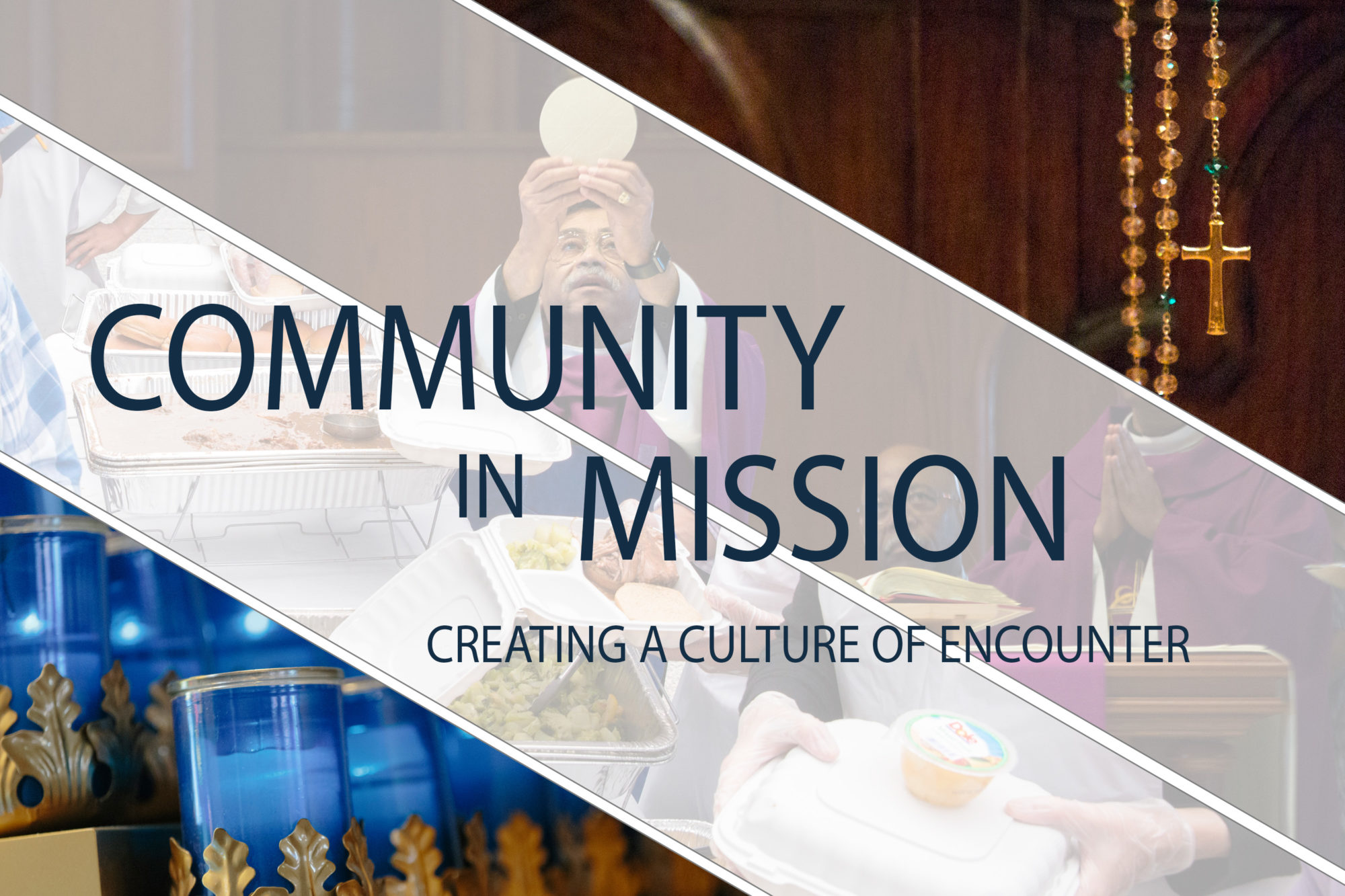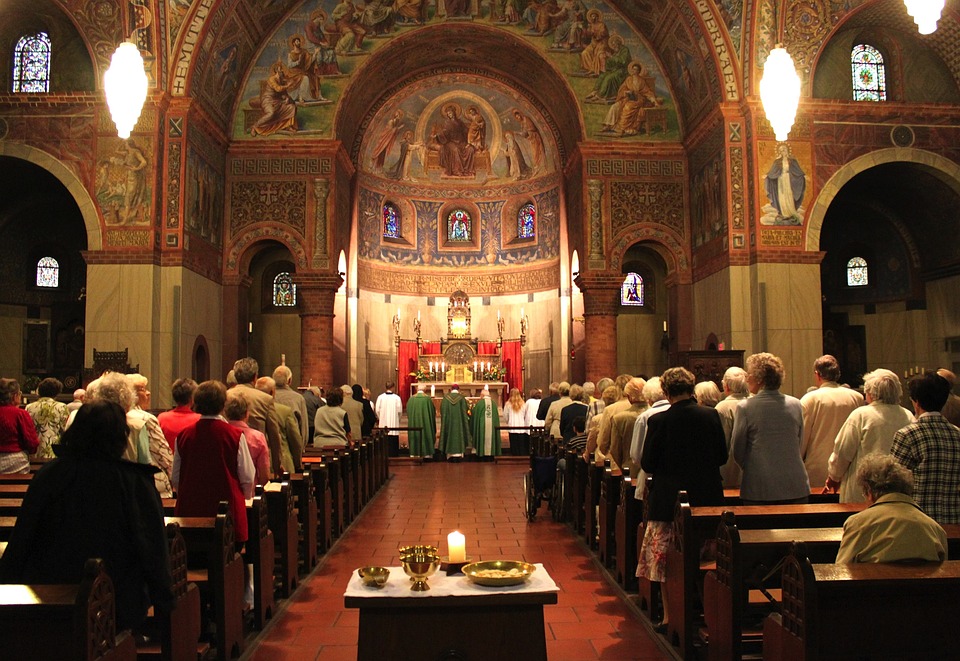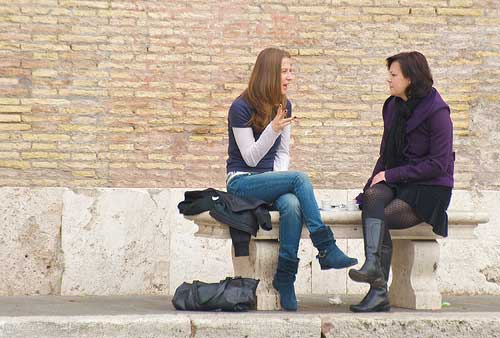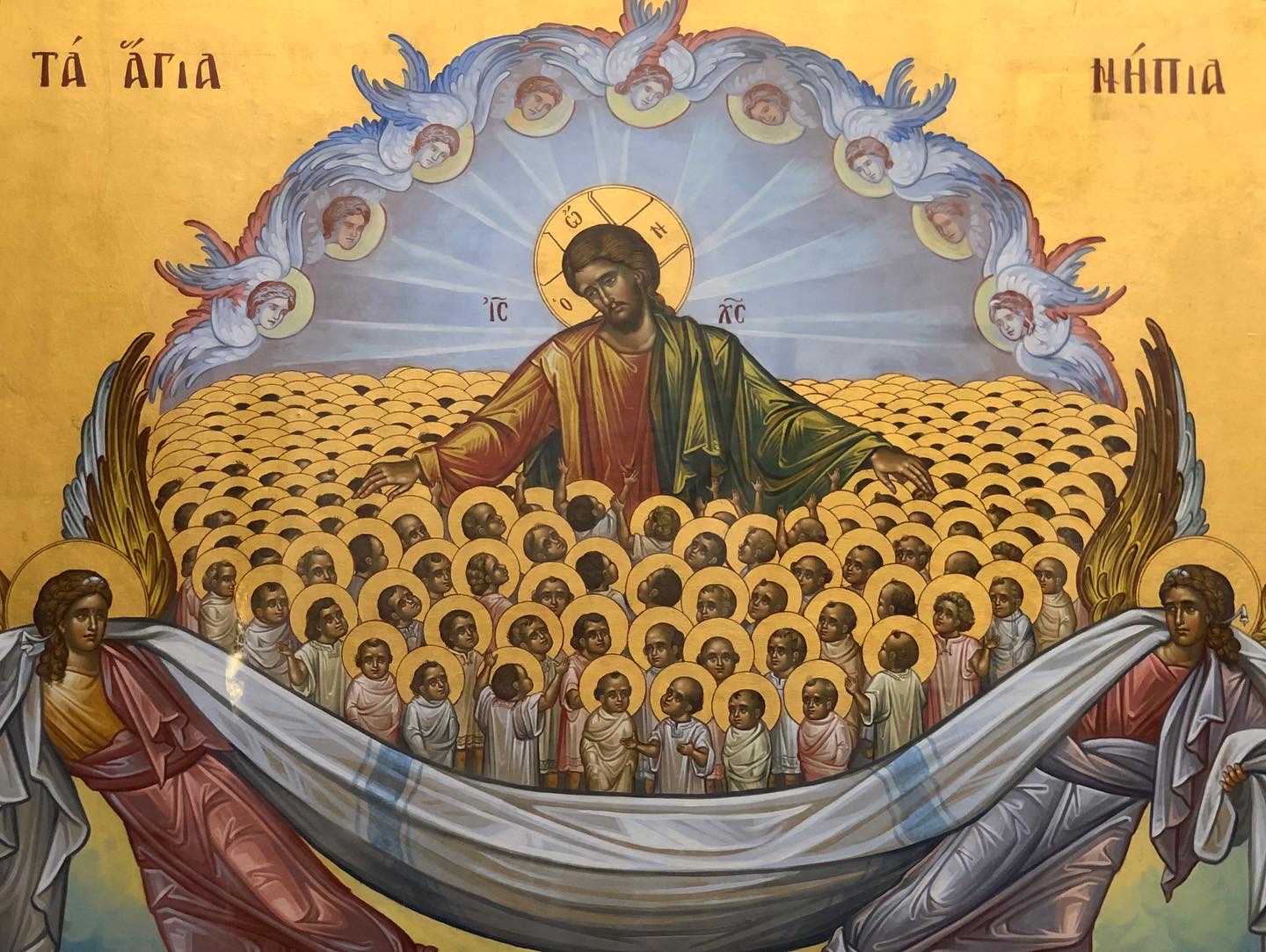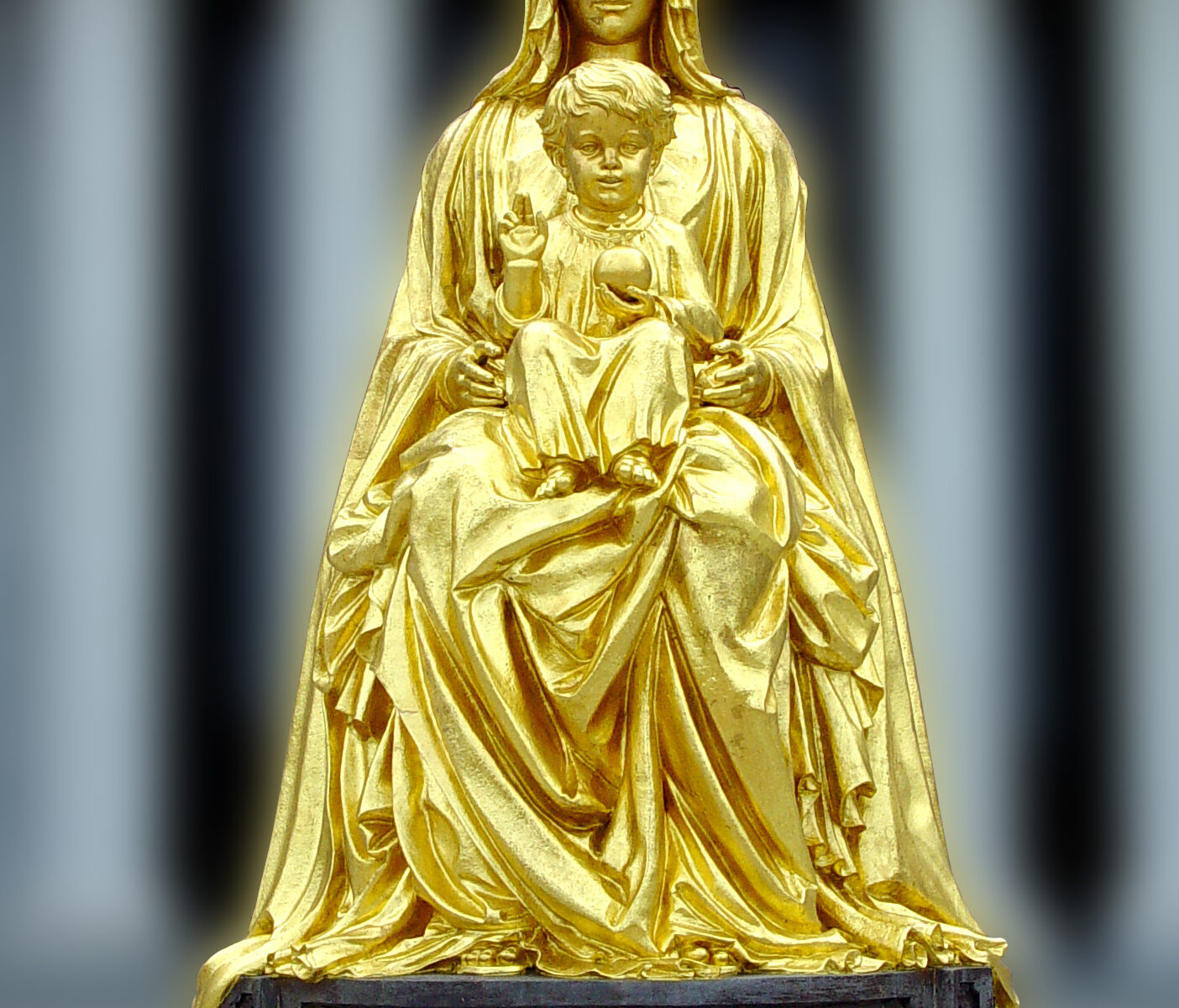 Fear is a complex passion. On the one hand, there are things that we ought to fear such as grave physical and spiritual dangers. The fear of being near the edge of a cliff might well save our life. The fear of serious sin and the punishment we might experience or the offense to God (who loves us) is both appropriate and holy. Sadly, more people lack this holy fear rooted in the possible loss of what is most precious to us: our eternal life with God.
Fear is a complex passion. On the one hand, there are things that we ought to fear such as grave physical and spiritual dangers. The fear of being near the edge of a cliff might well save our life. The fear of serious sin and the punishment we might experience or the offense to God (who loves us) is both appropriate and holy. Sadly, more people lack this holy fear rooted in the possible loss of what is most precious to us: our eternal life with God.
There are also things we fear that we should not, and things that we fear more than we should. These sorts of fears are usually rooted in our disordered and inordinate affections.
A disordered affection is a love for something that is sinful. We ought not to love it at all, but we do; this causes us to fear anyone or anything that interferes with accessing and enjoying what is fundamentally sinful.
An inordinate affection is a love for something that is good in itself, but the love we have for it is too great. Loving it too much causes us to fear the loss of it more than we should. Many things in this world are lawful pleasures, but we come to love them too much. We love things more than people, and both things and people more than God. This is all out of order. We are to use things, love people, and worship God. Too often, though, we use people, love things, and forget about God.
There is also the great struggle that many have called the “sin of human respect,” wherein we fear people more than we fear God and seek to please people more than to please God. When we fall prey to this, we are willing to do sinful things in order to ingratiate ourselves to other human beings, fearing and revering them more than we do God.
Fear is a necessary passion for us, but too often our fears are misplaced and inordinate. Our fears are easily manipulated by Satan and the world.
A major area for spiritual growth is knowing what and whom to fear. Apart from God we will seldom get this answer right. We are easy prey for the devil and the world to draw us into all sorts of inordinate and even foolish fears.
Because a story can often have an impact that mere discourse cannot, I would like to illustrate this teaching with a well-known children’s story.
The story is the basis for two phrases in common use. Most are familiar with them, but some have never read (or have forgotten) the story from which they come. The first is “The sky is falling!” and the second is “Chicken Little” (used as a description of a person).
Both these phrases come from the children’s story Chicken Little. It is a story that speaks to the need to be careful about what we fear and what we do not fear. For indeed, one of the traps of Satan is to get us to focus on what we ought not to fear, or on what is secondary, so that we do not focus on what we should fear, or on what is more important. Aristotle, citing Socrates, said that courage is the virtue of knowing what to fear and what not to fear.
Please take the time to read this story completely. It may seem tedious to us modern folks with limited attention spans, but its conclusion is made more powerful by the litany of details. Please share it with your children as well.
Chicken Little was in the woods one day when an acorn fell on her head.
It scared her so much she trembled all over.
She shook so hard, half her feathers fell out.
“Help! Help!” she cried. “The sky is falling! I must go tell the king!”
So she ran in great fright to tell the king.
Along the way she met Henny Penny.
“Where are you going, Chicken Little?” Henny Penny asked.
“Oh, help!” Chicken Little cried. “The sky is falling!”
“How do you know?” asked Henny Penny.
“Oh! I saw it with my own eyes, and heard it with my own ears,
and part of it fell on my head!”
“This is terrible, just terrible!” Henny Penny clucked. “We’d better run.”
So they both ran away as fast as they could. Soon they met Ducky Lucky. “Where are you going, Chicken Little and Henny Penny?” he asked.
“The sky is falling! The sky is falling! We’re going to tell the king!” they cried. “How do you know?” asked Ducky Lucky.
“I saw it with my own eyes, and heard it with my own ears, and part of it fell on my head,” Chicken Little said.
“Oh dear, oh dear!” Ducky Lucky quacked. “We’d better run!” So they all ran down the road as fast as they could.
Soon they met Goosey Loosey waddling along the roadside.
“Hello there, Chicken Little, Henny Penny, and Ducky Lucky,” called Goosey Loosey. “Where are you all going in such a hurry?”
“We’re running for our lives!” cried Chicken Little. “The sky is falling!” clucked Henny Penny. “And we’re running to tell the king!” quacked Ducky Lucky.
“How do you know the sky is falling?” asked Goosey Loosey.
“I saw it with my own eyes, and heard it with my own ears, and part of it fell on my head,” Chicken Little said. “Goodness!” squawked Goosey Loosey. “Then I’d better run with you.”
And they all ran in a great fright across a meadow. Before long they met Turkey Lurkey strutting back and forth. “Hello there, Chicken Little, Henny Penny, Ducky Lucky, and Goosey Loosey,” he called. “Where are you all going in such a hurry?” “Help! Help!” cried Chicken Little. “We’re running for our lives!” clucked Henny Penny. “The sky is falling!” quacked Ducky Lucky. “And we’re running to tell the king!” squawked Goosey Loosey.
“How do you know the sky is falling?” asked Turkey Lurkey.
“I saw it with my own eyes, and heard it with my own ears, and part of it fell on my head,” Chicken Little said. “Oh dear! I always suspected the sky would fall someday,” Turkey Lurkey gobbled. “I’d better run with you.”
So they all ran with all their might, until they met the fox, Foxy Loxy. “Well, well,” said Foxy Loxy. “Where are you rushing on such a fine day?”
“Help! Help!” cried Chicken Little, Henny Penny, Ducky Lucky, Goosey Loosey, and Turkey Lurkey. “It’s not a fine day at all. The sky is falling, and we’re running to tell the king!” “How do you know the sky is falling?” said Foxy Loxy.
“I saw it with my own eyes, and heard it with my own ears, and part of it fell on my head,” Chicken Little said. “I see,” said Foxy Loxy. “Well then, follow me, and I’ll show you the way to the king.”
So Foxy Loxy led Chicken Little, Henny Penny, Ducky Lucky, Goosey Loosey, and Turkey Lurkey across a field and through the woods. He led them straight to his den, and they never saw the king to tell him the sky was falling.
Notice how fearing the wrong thing, and fearing it to excess, blinded them to what was more truly to be feared, what was more truly a threat. Here lies a doorway for the devil. He incites us to fear lesser things like unpopularity, loss of money, poor health, the loss of worldly trinkets, the next election, global warming, persecution, and worldly setbacks, so that we do not fear Judgment Day and the possibility of Hell.
The day of destiny is closing in, but never mind that! The sky is falling: the wrong political party is in power; the planet is overheating; the economy is about to collapse COVID-19 everywhere! You might lose your home to a storm; people might not think you are pretty enough, tall enough, or thin enough. Be afraid; be very afraid! You don’t have time to pray and ask God to get you ready for Judgment Day because you are too busy being afraid that eating food X may cause cancer, or that people may be laughing at you because of the five or ten pounds you gained last Christmas, or that the Yellowstone Caldera may blow at any time.
I will not tell you that the aforementioned concerns have no merit, only that they have less merit than what most people never think about or fear: where they are going to spend eternity. Chicken Little and her friends were easy prey for Foxy Loxy because they were obsessed with lesser things and ignored more dangerous (and obvious in this case) things like a fox!
Yes, “Foxy Loxy” has you worried about smaller and passing things. Now you are easy prey. It will take but a moment for him to lead you astray and have you for dinner!
Make sure you fear the right thing. God has a plan to simplify our lives. We are to fear Him and be sober about getting ready, with His help, for the certain-to-come Day of Judgment. If we fear Him, we don’t need to fear anyone or anything else.
Bishop Robert Barron has observed that the three tallest buildings in Chicago are insurance buildings. Fear “looms large” in our culture, but no insurance company can insure you against the only certain threat you face: Judgment Day. Only God can do that.
The sky may or may not be falling. (Personally, I doubt 80% of the media’s fearmongering.) But Judgment Day surely is looming. Foxy Loxy (Satan) is waiting for you. Will he get you? Will your fear of the Lord help you to avoid falling prey to his deceptions?
